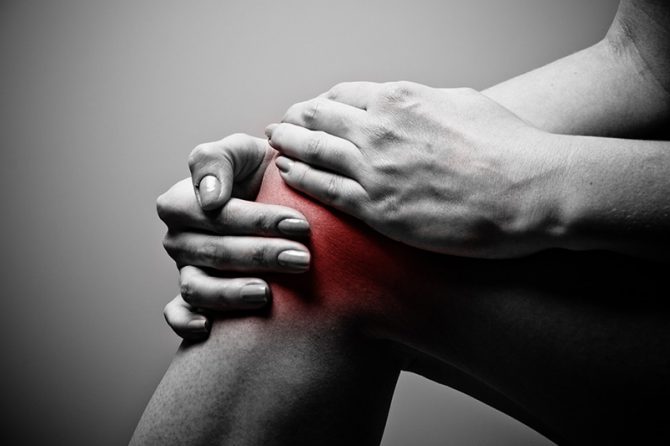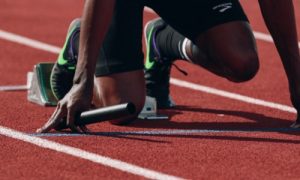
Knees can tease both young and active people, as well as older people. They are the most common reason for visiting a podiatrist. Unsurprisingly, the knee joint is the largest joint in the human body and the second most stressed (after the ankle).
Due to the constant stress, the knee joint is especially vulnerable to injury and degenerative changes. They are the result of the destruction of the articular cartilage. When injury occurs, pain or limitation of knee mobility and discomfort persists despite conservative treatment, knee arthroscopy is usually considered.
The orthopedist and traumatologist talk about the procedure. Grzegorz Svisulski.
– Doctor, please explain to us what is arthroscopy?
The name arthroscopy literally means “viewing the joints” and comes from the Latin words arthros (pond) and scope (clock). This is a minimally invasive operation involving the insertion of an optical camera (small webcam) on one side and miniature surgical equipment on the other.
Thanks to the preview on the monitor, the operator can see how the pond looks from the inside, he can carefully study its structures and perform the necessary processing using miniature tools. Arthroscopy can be diagnostic in nature, when looking into the knee allows the doctor to make a final diagnosis or surgery, when medical procedures are performed during the procedure.
– Who should undergo this operation?
The indications for arthroscopy of the knee are very broad (eg, damage to the menisci, cruciate ligaments, articular cartilage, foreign body found in the knee joint). Therefore, very often this is the first surgery performed on the joint, which significantly reduces the risk of a subsequent major surgery. During the procedure, your doctor can minimize the source of pain or blockage in your knee.
For example – a meniscectomy allows you to remove a damaged fragment of the meniscus, a micro-rupture can replace defects in the articular cartilage and, using the so-called razor, we can clean the knee joint from the inside. The operator can also repair damaged structures, such as a broken cruciate ligament, that cannot regenerate on its own. It is good to know that arthroscopy is performed not only in the knee joints.
– How does this treatment look like at Salus Medical Center?
The knee arthroscopy procedure has been performed in our institution in the orthopedics department for one day for more than 10 years. Currently, in addition to arthroscopy of the knee joint, we perform arthroscopy of the shoulder and ankle joints. Our center boasts a state-of-the-art Smith & Nephew arthroscopic tower.
The equipment is equipped with a Full HD camera, a 24-inch monitor, a Dyonisc Power II razor, a Dyonisc 25 atroscopic pump and quantum coblation (cobulation is a controlled ablation, a technique used to damage superficial cartilage). The staff working on this specialized equipment is highly qualified, since the manufacturer, in addition to providing hospitals and multidisciplinary institutions with the instruments necessary for surgery, regularly organizes training sessions and seminars for orthopedists and traumatologists, and also supports scientific symposia.
– What are the benefits of arthroscopy?
A huge advantage of arthroscopy is small postoperative scars and a fairly quick return to normal life. Depending on the procedure, your doctor may recommend a longer or shorter time to exert greater (partial) load on the limb, that is, walking with crutches and avoiding excessive movement (for example, squatting or sitting cross-legged).
If arthroscopy was a diagnostic test, the patient can return to the physical activity performed before surgery when tissue swelling subsides and the knee’s range of motion is full. If medical treatment was performed during the arthroscopy, the return time depends on the type of surgery.

For example – if the operator was cleaning the joint from degenerative changes and hypertrophied tissues – the patient may return to full activity after about 6-8 weeks. However, if the cruciate ligament was reconstructed during the operation, the time to return to training ranges from 6 months (for high-performing athletes – rehabilitation and motor training up to 6 times a week) to 12 months (for “normal” patients for whom sports are hobbies and physiotherapy procedures 2-3 times a week).
Grzegorz Świsulski – surgeon, orthopedic traumatologist, Medical Academy in Wroclaw with a 37-year-old. In addition to working in hospitals, he has gained many years of extensive professional experience by participating in numerous courses, trainings and symposia at home and abroad. Currently head of the Department of Orthopedics at the Department of the Salus CM Salus Hospital in Klodzko.
Specializes in orthopedics and traumatic surgery, focusing on the rapid diagnosis and immediate treatment of acute knee injuries, including qualifications for arthroscopic surgery, arthroscopic surgery, along with meniscus injuries, ligament injuries and their reconstruction, articular cartilage transplantation.
Dr. Arthritis of the knee and shoulder joints, ankle joints and restorative procedures are performed by Dr. Svisulsky using the latest surgical techniques. It also deals with other types of injuries, including fractures, sprains, dislocations and the treatment of overload changes in the musculoskeletal system (muscles, joints).
Dr. Świsulski also deals with the treatment of degenerative joint diseases using the latest stem cell therapies. Stem cell therapy is the future of medicine; Almost every day, the media report on new areas of their application and innovative forms of therapy, which until recently have quickly become a weapon of doctors in the fight against incurable diseases and injuries.
Stem cells, also called stem cells, are involved in the creation of every living organism. They can divide countless times, they also have the unique ability to differentiate into other types of cells and self-renew, that is, to replace dead cells with new ones that take over their functions. Thanks to this, all sports injuries and joint injuries associated with degenerative changes are treated with stem cells in orthopedics.
The method is used to support the healing of bone fractures, replace articular cartilage defects, and treat conditions such as the jumper’s knee or chronic Achilles tendonitis. Stem cells are also used for muscle damage (tears, tears) and for overload or damage to the ligaments. One of the richest sources of stem cells in an adult is adipose tissue. It is taken from a patient and contains up to 10 million cells (about 50,000 ASCs can be isolated from the bone marrow, and about 10,000 ASCs only from peripheral blood).
It is important to note that the procedure for collecting body fat is practically painless for the patient; Liposuction is used for this, and fatty tissue is most often taken from the abdominal cavity through a small incision of a few millimeters.
